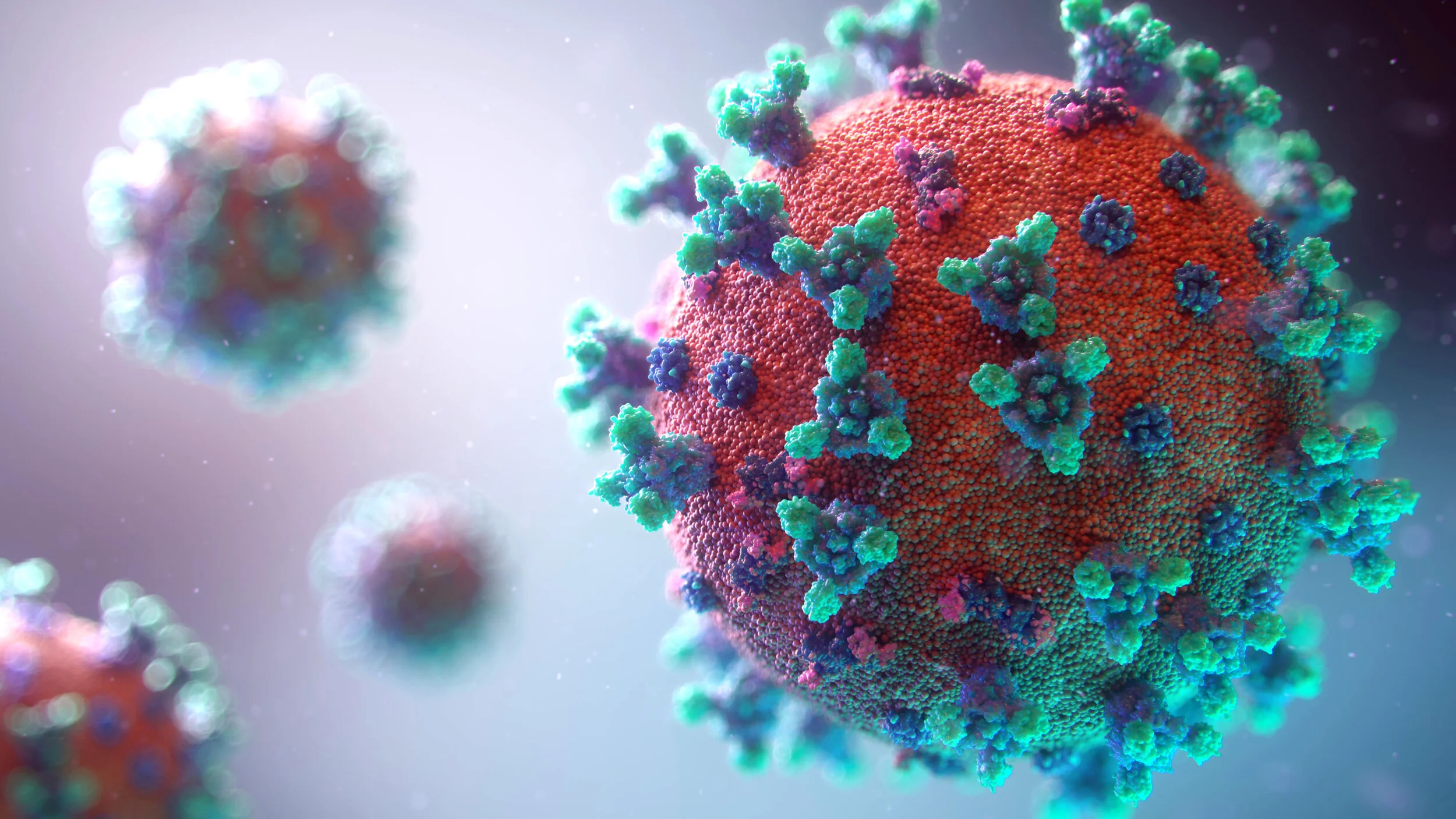How Core Potentials is managing Covid-19 day-to-day
COVID-19
The measures implemented to stem the rate of infection of COVID-19 have caused a great upheaval to society, upsetting social norms and daily routines. For some, life has slowed dramatically, leaving us with more family time and less work hours. For others, working from home can be a challenge with young kids needing attention and care. Stress and anxiety are on the rise as the need to care for elderly or disabled family members increases.
Eating a healthy diet, being physically active, managing stress, and getting enough sleep are critical to keeping your immune system strong. Read below for guidance on how best to care for yourself and your community. Do the best you can everyday, and express gratitude for the joys, no matter the size, you encounter along the way.
The Virus:
COVID-19 is spreading throughout the globe at an unprecedented rate. The virus is called SARS-CoV-2 and the condition the virus causes is COVID-19 (CO: strain of coronavirus, VI: virus, D: disease, 19: year it was discovered). It is a “novel” virus as it has never been seen in humans, meaning everyone is susceptible to infection as we have not created antibodies to fight the virus. Because it is new, it will take some time for people to develop immune protection.
Coronaviruses are a large family of viruses that cause a variety of illness ranging from the common cold to more severe diseases — such as Middle East Respiratory Syndrome (MERS-CoV) and Severe Acute Respiratory Syndrome (SARS-CoV). There are four other coronaviruses that circulate routinely – OC43, 229E, HKU1, NL63 – which generally cause colds.
The word “virus” has its roots in the Latin term for “poison.” Historically viruses were first seen as poisons, then as life-forms, then biological chemicals. We now know a virus is made of genetic material (DNA, RNA) protected by a protein shell, therefore it is not an alive organism. It is so small that hundreds and hundreds of virus cells could be lined up along one grain of rice.
A virus does not meet the criteria for being alive as:
It is not made up of cells,
It does not have a metabolism and does not grow and develop over time,
It’s lifespan depends on the host cell,
It can not reproduce its own species
When a virus enters a cell (called a host after infection), it sheds its protein coat and prompts the cell’s replicating mechanism to reproduce the virus’ DNA or RNA. Millions of viral cells arise and go on to infect other cells.
Spreading the Virus
Fortunately for us, the virus needs human cells to thrive and cannot survive long on exterior surfaces. To spread, the virus needs to come in contact with a part of your body that allows it to enter your cells. We are social beings, we touch each other and other things frequently. When we sneeze or cough and then touch a surface or someone else (shaking hands), those infected droplets can be transmitted. Airborne droplets are viable for up to 3 hours in the air (sneezing, coughing, being in the presence of another’s breath) so walking through a space where an infected person has been can put a person at risk of infection.
A recent study published in the New England Journal of Medicine found that the virus can live up to 24 hours on cardboard and 2-3 days on plastic and stainless steel. The virus has also been found in feces.
Hand Washing
We know about the hazard of touching eyes, nose, and mouth. Extensive hand washing and using hand sanitizer can create dry irritated skin that is more difficult to disinfect than healthy skin. The virus can enter through fissures caused by dry skin. Using a lotion will help restore the water-holding capacity of the keratin layer, helping to repair the damaged skin.
Caution is warranted when using lotions with petroleum products and wearing gloves as the lotions can weaken the gloves barrier. Select a water-based lotion, or use lotions or oil emollients at the end of each day.
Watch this video to see how easy it is to spread germs. How To See Germs Spread (Coronavirus), Mark Rober. Diligence with social distancing, hand washing, and keeping hands away from your face are required to keep you and your families healthy.
Grocery Shopping and Food Safety
We are blessed with a resilient food system. Although our supply chain management will catch up with demand and Canada is food secure. Long lines to get into stores may cause anxiety about shortages but the lines show proper social distancing by limiting the number of customers in stores.
Shopping for groceries and medication can be overwhelming. Doorknobs, bags, conveyor belts, counters may have traces of the virus. Although there is no published evidence of contracting COVID-19 from touching food or food packaging that comes into contact with the virus, COVID-19 can survive on surfaces and objects. Your best defence is to wash your hands regularly, especially after touching frequently handled objects.
Washing your food and food packaging before putting them away in the fridge and cupboards is also advisable.
Fortunately, COVID-19 is unlike other viruses that can persist on food or other surfaces for long periods. The Food and Drug Administration (FDA) recommends four steps for safely dealing with food: Clean, Separate, Cook, and Chill.
One of the greatest risks of contracting the virus while shopping is from touching a shopping cart or basket. COVID-19 can remain on hard surfaces such as steel and plastic (car door handles, building door handles, shopping cart/basket handles, elevator buttons) for up to 3 days so these are the highest risk surfaces to touch. To stay safe, consider following these guidelines:
Bring your own reusable shopping bags and offer to bag your own groceries. Self-checkout lanes may reduce your contact with people but the barcode scanner, touchscreen, and conveyor belt are possible sources of contamination.
Use store wipes (or bring your own) to wipe down all surfaces of the cart or basket that you touch. Discard the wipe immediately. Stores may not have hand sanitizer so bring along a pair of disposable gloves. Put them on before touching the shopping cart or basket.
Avoid touching your face whenever in a public place. Carry hand sanitizer and use it after leaving the building. Sanitize car door handles and house door knobs if you have touched them without sanitizing your hands.
Maintain a distance of 2 metres. Many stores now have taped lines delineating social distancing parameters while standing in line.
Frequent hand washing remains a critical step in reducing the spread of COVID-19. When returning home, before preparing or eating food, wash your hands thoroughly with clean water and soap for a minimum of 20 seconds.
Wash fresh produce that will not be cooked before eating. Use a vegetable scrub brush and scrub the surface vigorously with water (be gentle with softer produce). This method is effective at removing pathogens on the surface. Wash the scrub brush with soap and water after each use. Note that popular rinses such as vinegar are not known to be effective at killing COVID-19 as it is an “enveloped virus,” meaning that it is covered in an oily membrane. Plain soap is very effective at disrupting the oil on surfaces, and water is effective at removing and rinsing away the virus.
Support local businesses by ordering takeout or delivery meals. Choose a balanced meal with whole foods as much as possible. Your continued health relies on you making food choices low in sugar and high in minimally processed foods.
According to the Centres for Disease Control and Prevention, COVID-19 is not likely to be transmitted through food itself. Because it can remain on cardboard surfaces for up to 24 hours, discard cardboard food packaging immediately. Once you receive the meal, transfer it from its packaging onto a plate, discard the packaging, and wash hands thoroughly with soap and water before eating.
Request that supermarket food deliveries be left on your doorstep. Discard the packaging immediately once food is removed from bags or boxes. Wash hands with soap and water, following proper hand washing techniques. Follow general food safety guidelines for handling food.
Meal Planning, Preparing and Eating
I love meal planning as it takes away the anxiety of food preparation and ensures maximum usage of purchased foods. This practice is more important than ever as we decrease the frequency of our shopping trips and may have limited incomes. Canada’s Food Guide website gives some basics of meal planning.
Additional recommendations for meal planning are:
Involve your family. When you choose a meal they request, they are more likely to help make it and eat it.
Choose meals that have similar ingredients. Make a large batch of rice and use it for a few days with different additions. Vegetables like cauliflower are versatile and can be used in place of rice or potatoes, used in soups, or as a side dish.
Have fun. It’s likely your family is at home so get them involved and teach them how to cook and bake.
Keep it simple. Grocery shopping may expose us to COVID-19 so shopping time should be as short as possible. Keep your meal items simple and filled with fresh ingredients that last (apples, pears, oranges, cauliflower, onions, potatoes, spinach, garlic, ginger).
Hand washing should be the first step in all food related activities.
To help your food dollars go farther, focus on soups and stews, especially if you have a slow cooker. These recipes can amp up the flavour especially if you aren’t using the freshest ingredients. Soups and stews can also stretch meals into more servings and freeze well for 3-6 months when stored in airtight containers.
If you have freezer space, perishable fruits such as berries, bananas, cantaloupe, and pineapple freeze well. Chop into small pieces and place on a tray in the freezer. When frozen, bag or store in jars by serving sizes. Freezing bulk meats and vegetables can also help decrease your shopping frequency.
Plan to eat together at least one meal each day...screen free. Start the meal with an expression of gratitude for your food, your family, your community. Try playing fun games like “would you rather…”. Laughter and social connection helps decrease stress and anxiety and can lead to a stronger immune system that will help fight the virus and keep us safer.
Stock up on compassion as we adjust to this new normal. It’s likely we all know someone seriously ill with COVID-19 and their communities, families, and friends need our support. Whether it’s offering to shop for those at risk or giving an anxious shopper that extra distance and understanding, we can practice compassion each day. We’ve got this.
Love and Blessings,
Krista





